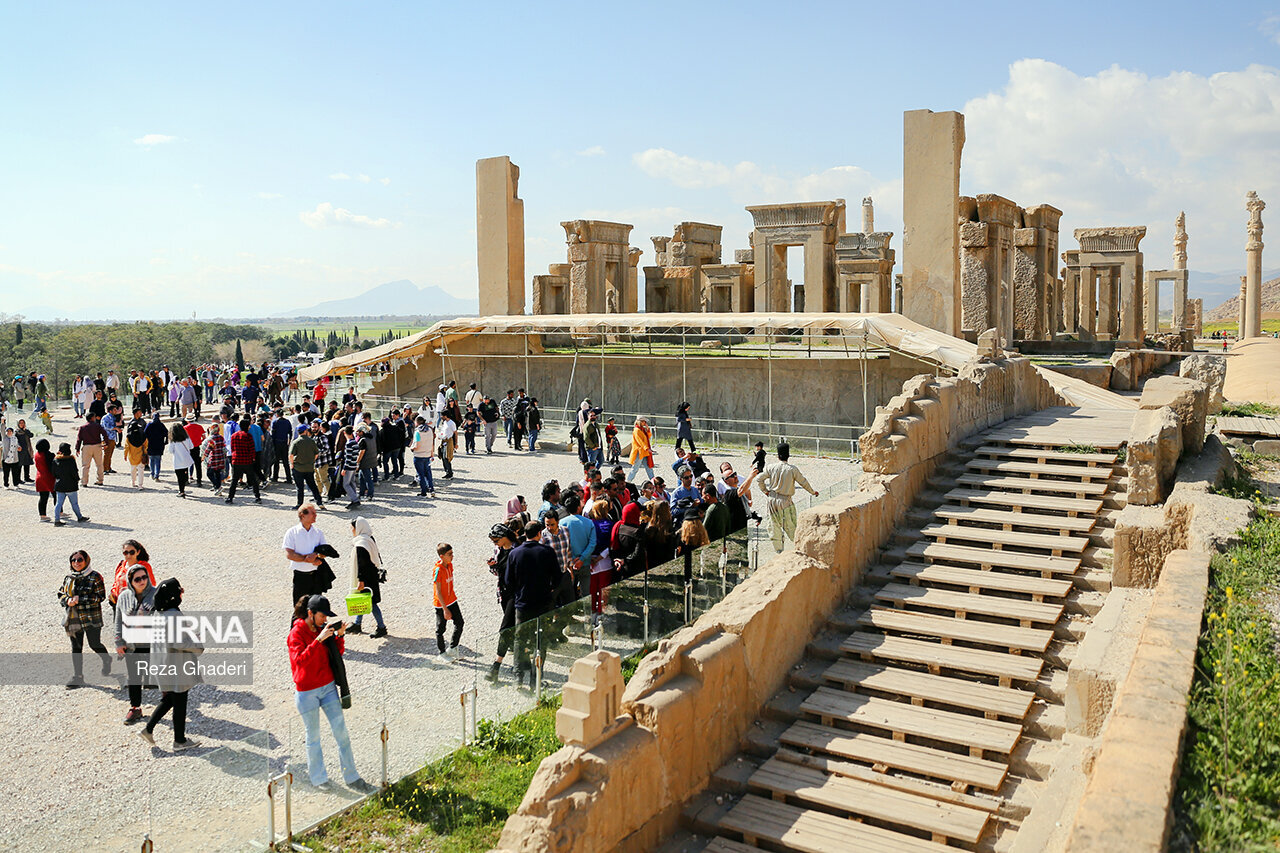Persepolis ranks Iran’s most visited World Heritage site

TEHRAN – Persepolis, which was once the ceremonial capital of the Achaemenid Empire (c. 550-330 BC), has been crowned Iran’s most popular UNESCO site this Noruz, according to an annual ranking by the ministry of cultural heritage and tourism.
“A total of 261,049 people toured Persepolis during the Noruz holidays (which officially started on March 21),” IRNA quoted an official in charge of Iran’s World Heritage sites as saying on Monday.
Imam Square of Isfahan, Fin Garden of Kashan, and Fars province’s Pasargadae attracted a higher number of visitors to UNESCO sites after Persepolis, Reza Sameh explained.
World Heritage sites in the provinces of Fars, Isfahan, Kerman, Kermanshah, and Khorasan Razavi attracted 521,912, 437,223, 153,504, 134,208, and 133,259 visitors respectively, the official added.
This year official Noruz holidays started on March 21 for four days after New Year's Eve, but schools and many shops remained closed until the day after Sizdah Be-dar on April 2.
Persepolis, whose magnificent ruins rest at the foot of Kuh-e Rahmat (Mountain of Mercy), was the ceremonial capital of the Achaemenid Empire. The highly impressive site is situated 60 kilometers northeast of the city of Shiraz.
Also known as Takht-e Jamshid, Persepolis ranks among the archaeological sites, which have no equivalent, considering its unique architecture, urban planning, construction technology, and art.
Majestic approaches, monumental stairways, throne and reception rooms, and dependencies have made that 13-ha ensemble one of the world’s greatest archaeological sites.
Construction of its immense terrace was begun about 518 BC by Darius the Great, the Achaemenid Empire’s king. On this terrace, successive kings erected a series of architecturally stunning palatial buildings, among them the massive Apadana palace and the Throne Hall (“Hundred-Column Hall”).
The terrace is a grandiose architectural creation, with its double flight of access stairs, walls covered by sculpted friezes at various levels, monumental gateways, gigantic sculpted winged bulls, and remains of large halls.
By carefully engineering lighter roofs and using wooden lintels, the Achaemenid architects were able to use a minimal number of astonishingly slender columns to support open-area roofs. Columns were topped with elaborate capitals; typical was the double-bull capital where, resting on double volutes, the forequarters of two kneeling bulls, placed back-to-back, extend their coupled necks and their twin heads directly under the intersections of the beams of the ceiling.
Narratives say that Persepolis was burnt by Alexander the Great in 330 BC apparently as revenge against the Persians because it seems the Persian King Xerxes had burnt the Greek City of Athens around 150 years earlier.
AFM
Leave a Comment